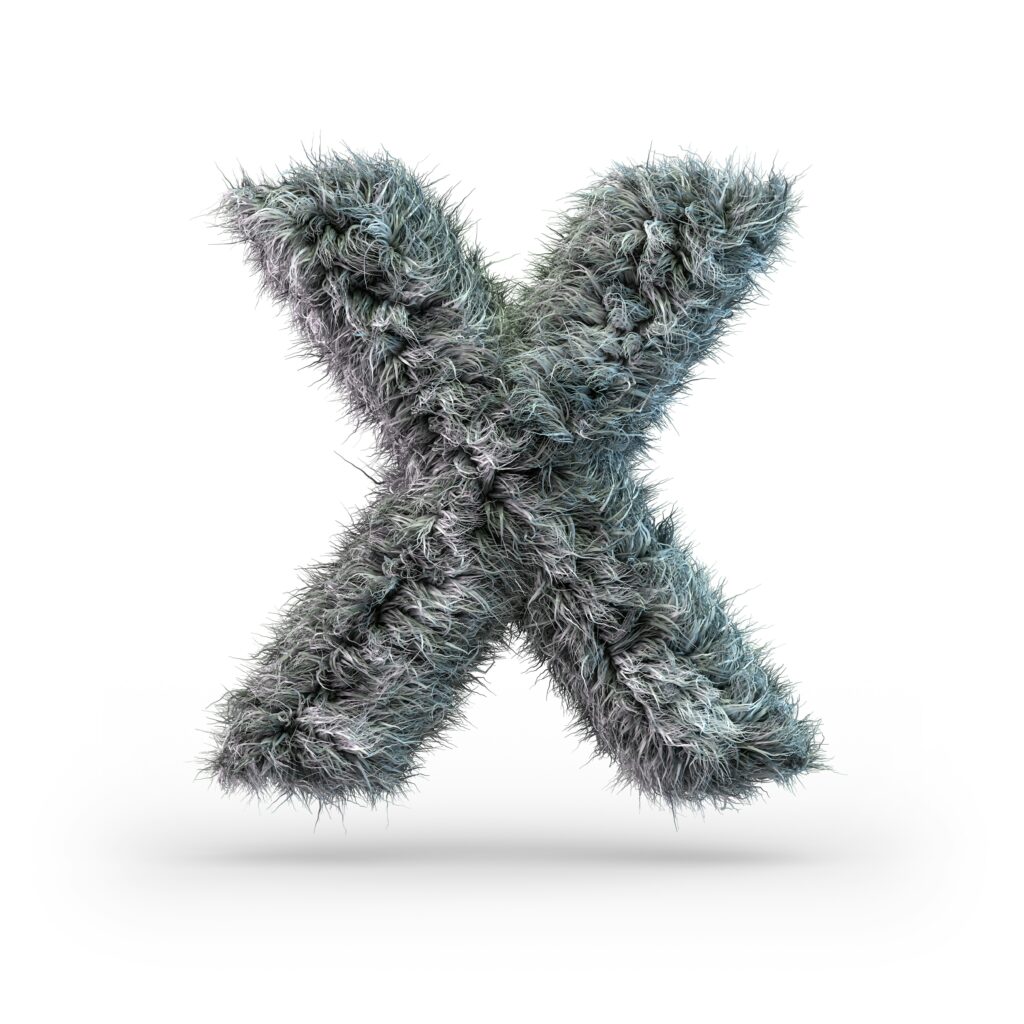
What You'll Learn...
- The importance of prioritizing brand loyalty over heavy sales tactics
- How to make your customers love you by learning about what they really want
- How to build a lasting relationship with your customer through two-way email and SMS communication
- Why you should approach your customer retention program like you approach dating
- How to transition your brand from sales-first to brand-first without tanking your revenue
You’re probably approaching your email campaigns wrong
Tell me if this sounds familiar: You’re thirsty, so you stop at your favorite grocery store to buy some water. You walk down the beverage aisle, and you see 30 different brands of water.
Which one do you pick?
Now, most people don’t know (or care) about the differences between the water in the bottles.
Water is water, right?
At that moment, what drives your decision will be the brand on the bottle, not what’s in the bottle itself.
Let’s take this analogy and bring it back to your email and SMS marketing flow.
Your customer’s inbox is like that cluttered grocery aisle, jam-packed with emails all vying for attention.
Your customer’s decision to open any particular email will be based on more than just a catchy subject line, it will be based on who they trust and what they’re feeling at the time.
Your customer’s purchase behavior will be based on their relationship to your brand.
Having worked with founders on their retention marketing strategy through my company, The Email Marketers, I’ve seen time and time again just how impactful a well-developed brand can be.
Now you’re thinking: That’s great, Melanie, great story, but how do you do that?
- How do you make people choose you not just based on your product, product features, and pricing?
- How do you evolve from a transactional brand into one that genuinely creates fans, drawing people into becoming a part of your community?
- Won’t I lose all my revenue if I stop sending heavy sales emails and start focusing on the brand?
Well, I’m glad you asked. Here are four concrete steps you can take to make your brand first in your audience’s mind.
The truth is people crave connection. They want to feel understood. They want to be seen as a person, not just a wallet to be opened. Every email you send is an opportunity to sell, but more importantly, to connect, to provide something so valuable that your reader opens every email you send going forward.
Step 1: Answer this question first: What’s in it for them?
It’s easy to get caught up in the sell, sell, sell mindset because the truth is sales pitches do make sales! But pause for a moment and think about the last few emails you sent out.
- How many of those were just sales pitches?
- How many were gifts of genuine value, no strings attached?
- How would you feel if you had opened that email from a competitor?
The truth is people crave connection. They want to feel understood. They want to be seen as a person, not just a wallet to be opened. Every email you send is an opportunity to sell, but more importantly, to connect, to provide something so valuable that your reader opens every email you send going forward.
So, before you create your next email for your customer base, stop and ask yourself:
What can I send to my customers today that will make them excited about the email they’re going to get tomorrow?
Here’s an example: Let’s say you work for an accounting SaaS platform. If your target customer is a small-business owner, send them a high-value newsletter with three things small-business owners need to know about accounting. You don’t have to send them a weekly newsletter, send it to them monthly.
If you can solve a pain point they have, they’ll remember how awesome your newsletter was and that warm fuzzy feeling it gave them way longer than they’ll remember you trying to push that fancier service tier on them.
You may not be selling anything to them right now, but investing in the relationship by providing valuable content will pay dividends in the long run.
That good feeling leads to brand loyalty. Brand loyalty leads to more sales.
Step 2: Never forget that email and SMS should foster two-way communication
It’s easy to forget that email and, especially, SMS were built as two-way communication channels.
Use them to create conversations that help you know what your customers care about.
Here’s an example: One olive oil brand we worked with was struggling with customers getting analysis paralysis. They had too many olive oil flavors! They sold flavors with descriptions like “hint of apple and green lettuce’.
Customers had no idea what that meant.
So we did the thinking for them.
We built a quiz email that asked, “What’s your favorite nighttime snack?” The reader would then click on an answer within the email, which lead to a product page, and then we told them which variety they should buy.
Not only did we reduce cognitive load, which is a significant barrier to purchase, but we also gathered more information on what they like, which is something we can use in future campaigns.
If you were a haircare brand, you could use something like this to get your customers to self-identify their hair length, thickness, and health and then tell them which product to buy.
You could then target them with content emails that talk about their specific hair type.
Whatever you do, learn about your customer and show them you’re willing to help.
Bonus: Here’s a tactic I developed for my customers that you can steal.
At the end of the abandoned cart email flow, program in a long delay and then send them a plain-text email that just says, “Hey, I saw you had such and such in your cart, but you decided not to purchase. It’s super important to us to learn more about our customers. Would you mind just shooting me a quick reply and telling me why? I’m happy to send you a free sample or discount in exchange.”
With the plain-text email you’re giving people the experience of someone personally reaching out to them. You just made them feel like they are an important customer, plus you get feedback.
All it cost you was a free sample or discount, which will probably convert them into a customer anyway.
Engage. Learn. Connect.
Join "Tales From The Tub"
Newsletter Opt-In
Step 3: Treat retention marketing like you treat dating
I like to use the analogy of dating to explain how you should approach retention marketing.
Your first purchase is like a first date, not the wedding.
Just like on a first date, you want to make a killer first impression. You dress your best, you choose your words carefully, and you show genuine interest in the other person. Why? Because you want them to be intrigued. You want them to think, “Hey, I want to know more about this person and they want to know more about me.”
That’s exactly how your purchase experience should be. It should be engaging, personal, and interesting. It should leave your customer thinking, “This is a brand that gets me. I want to hear more from them.”
And then, if you’ve nailed that first impression, you get the second date – the follow-up message. This is where you start to build on that initial spark. You share a bit more, maybe offer something of value, and show that you’re interested in a relationship, not just a one-off interaction.
Each subsequent interaction is like another date. You’re building a relationship, deepening the connection, and showing that you value them not just as a customer, but as a person.
The goal is to not just make a sale, but to create a lasting relationship. To turn that first date into a long-term partnership where both parties feel valued and understood.
I’ve found that a lot of businesses do spend a lot of time on everything up to the first purchase. Unfortunately, they fall apart after that.
Coincidentally, I’ve found that many of my friends have the same problem with dating. Go figure.
For this step, shift your sales and marketing resources to focus on everything that happens after the first purchase.
If you’re running a post-purchase flow, think about the emails your customers should get. Craft a second, third, and fourth purchase experience that feels as fresh and personalized as the first. Think about it in terms of milestones:
- How do you get your customer to make a second purchase?
- From the second purchase, how do you get them to become a subscriber?
- From the subscriber, how do you get them to be a brand advocate that tells all their friends and family about you?
Don’t stop at the first purchase, you have their attention! Nourish that relationship and keep it going.
Most of your energy should focus on how to get people who’ve purchased once, to purchase again and again. How do you get them to be lifetime customers?
Step 4: Make the transition to a brand-first relationship as opposed to a transactional relationship.
But what if your company’s approach is entirely built around sending two emails a day to everybody on your list? What if when you skip a day of emails or don’t run your monthly discount your company revenue plummets?
I just did a write-up on Twitter about Abercrombie & Fitch and how they made this transition. In a few short years, Abercrombie & Fitch went from closing 400 stores to absolutely crushing it.
How’d they pull it off? As a die-hard Abercrombie & Fitch fan, I witnessed it first-hand.
I’ve been a loyal customer for years and I had my purchase flow down to a science. If there was something I wanted, I’d leave the stuff in the cart until the inevitable next big sale showed up in my inbox. Worked every time, got some good deals, I loved it.
Over the course of a few years, I noticed sales started to slow down. In fall of 2023, I spotted a skirt I fell in love with.
Just like I’d done for years, I put it in my cart and I waited until the Black Friday sale. When Black Friday came, the skirt wasn’t on sale. It was sold out. I bought the next size down because I wanted it that bad and spent all of Thanksgiving close to fainting.
Abercrombie & Fitch was teaching me that if I don’t buy it from them now, I might not get it. I can’t just wait for sales anymore. Through scarcity, they trained their customers to stop waiting for sales. They not only drastically decreased the number and offer in their sales, but also their inventory.
This didn’t happen overnight (that would have been too abrupt), and it was painful, but they successfully transitioned over six years to a company that was brand first, discount second.
I get it, your business may not be able to survive a sudden shift to a more balanced messaging strategy. So take it slow.
You could follow the Abercrombie & Fitch playbook. Shift from a discount-heavy approach to creating demand through scarcity and brand desire. It’s a slow process, but start by not discounting your best-sellers. Teach your customers that waiting might mean missing out.
I’ve found that when sales-heavy businesses make the shift to a more balanced strategy, they do see an initial drop in revenue. But generally within a year the dip levels off, then starts climbing, steadily growing until the revenue from their email marketing doesn’t just recover; it grows past their initial numbers.
Gradually reduce the frequency of sales-driven communications and start incorporating more brand storytelling, customer testimonials, and behind-the-scenes content. Show the human side of your brand.
Your first purchase is like a first date, not the wedding.
Remember, you're selling to actual people, so treat them like it.
If you want customers to buy your ‘water bottle’ over the 30 others out there, you have to be their go-to brand, and that means building a brand they trust, a brand they like, and a brand they’d tell their friends about. If you want people to open your email, or read your SMS, give them content they actually want to read.
Shifting away from a primarily sales-driven approach might feel intimidating at first, but stick with it. Your effort will reflect positively on your bottom line and your customers will appreciate it too. Build connections that last and your business will grow.
-
Melanie Balke is the founder and CEO of The Email Marketers, an outsourced retention team for e-commerce brands with $2 million or more in revenue. The Email Marketers helps brands increase their customer lifetime value and build a community of raving fans through email marketing, SMS marketing, subscriptions, memberships, and other retention tactics. Melanie started The Email Marketers because she felt the agency world was fundamentally broken. Disillusioned by the "churn and burn" mentality, Melanie vowed never to work for an agency again until she unintentionally started her own. By specializing in a highly niche service, The Email Marketers can provide the highest quality execution. Their motto is "Reputation over profits." Their vision: To be the Ogilvy of retention marketing. Before Melanie started The Email Marketers, she was the Head of Email Marketing for one of LA's fastest-growing agencies and the first marketing hire for Apt2B (acquired), as well as a marketing consultant for conglomerate brands such as Mercedes-Benz and SMART before that. As an avid writer & speaker you can find Melanie speaking at Traffic & Conversion, DC Bangkok, AdWorld, Affiliate Summit, Mailcon, and featured in publications such as Business Insider. Melanie is passionate about entrepreneurship, customer acquisition and retention - specifically email and SMS marketing - sustainability, foreign cultures, pasta, and - most of all - surfing. She's also the CEO of Dad Jokes Notable Clients: Forbes, Beatbox, Outer Furniture ($50m in Series B funding), Thrasio, Open Store, Almond Cow, Bud.com
View all posts






